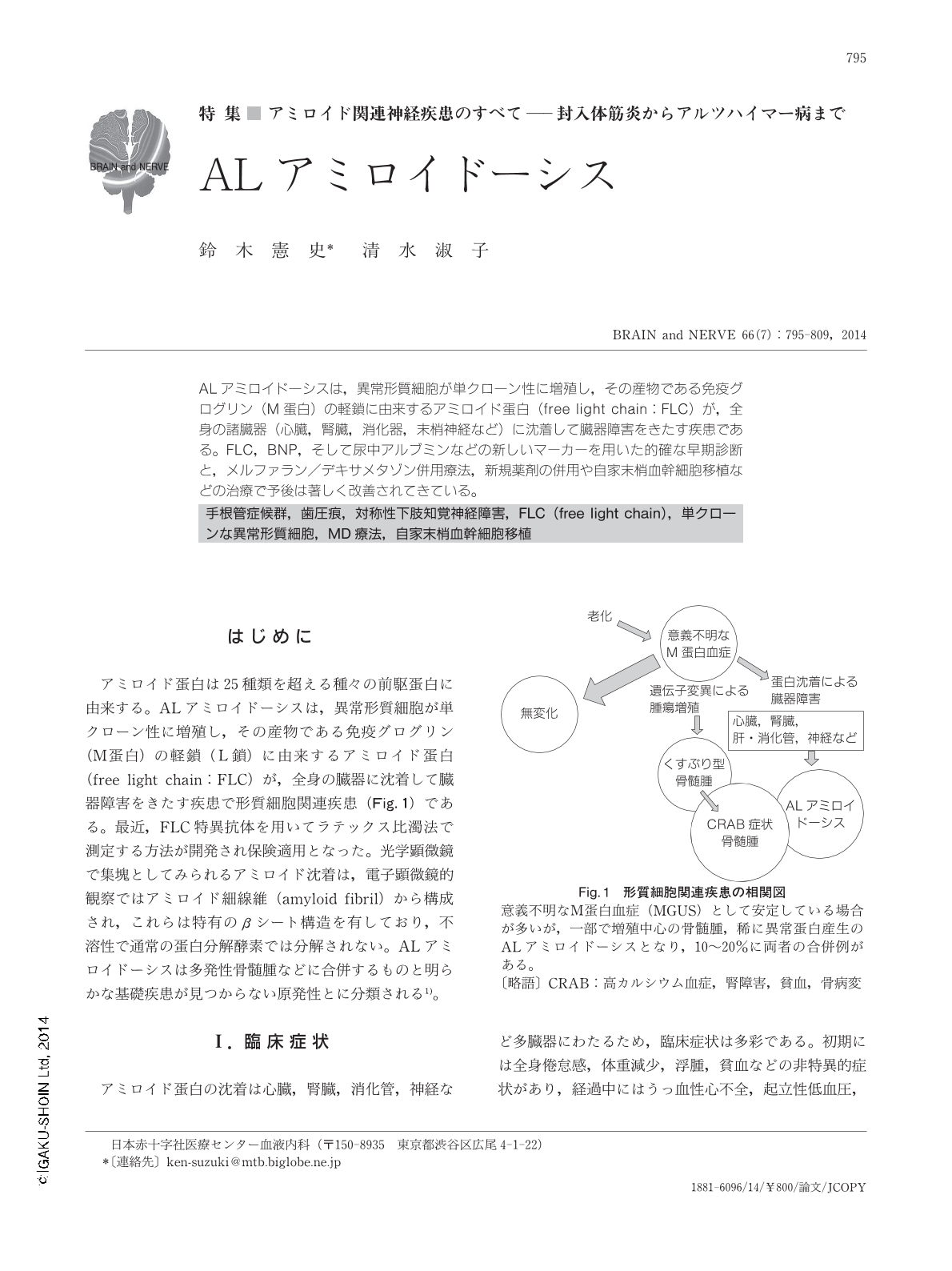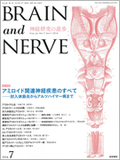Japanese
English
- 有料閲覧
- Abstract 文献概要
- 1ページ目 Look Inside
- 参考文献 Reference
ALアミロイドーシスは,異常形質細胞が単クローン性に増殖し,その産物である免疫グログリン(M蛋白)の軽鎖に由来するアミロイド蛋白(free light chain:FLC)が,全身の諸臓器(心臓,腎臓,消化器,末梢神経など)に沈着して臓器障害をきたす疾患である。FLC,BNP,そして尿中アルブミンなどの新しいマーカーを用いた的確な早期診断と,メルファラン/デキサメタゾン併用療法,新規薬剤の併用や自家末梢血幹細胞移植などの治療で予後は著しく改善されてきている。
Abstract
Primary amyloid light chain (AL) amyloidosis is the most common and most aggressive form of systemic amyloidosis. In AL amyloidosis, the products of free light chains (FLCs) of monoclonal amyloidogenic plasma cells deposit in the heart, kidneys, liver, gastrointestinal tract, autonomic nerve systems, and soft tissues, consequently leading to progressive disability and organ failure. Tissue biopsy (mainly bone marrow and subcutaneous fat aspirate) staining with Congo red to demonstrate amyloid deposits is required for diagnosis.
Autologous stem cell transplant is the preferred treatment method; however, only 25% of patients are eligible. Non-transplant candidates can be offered melphalan-dexamethasone or clinical trials of new agents (thalidomide, lenalidomide, and bortezomib), which have been shown to improve survival. N-terminal pro-brain natriuretic peptide (>1800 ng/l), cardiac troponin T (>0.025 ng/ml), and dFLC (>180 mg/l) are known poor prognostic factors. Late diagnosis remains a major obstacle for initiating effective therapy while organ dysfunction is still recoverable.

Copyright © 2014, Igaku-Shoin Ltd. All rights reserved.


